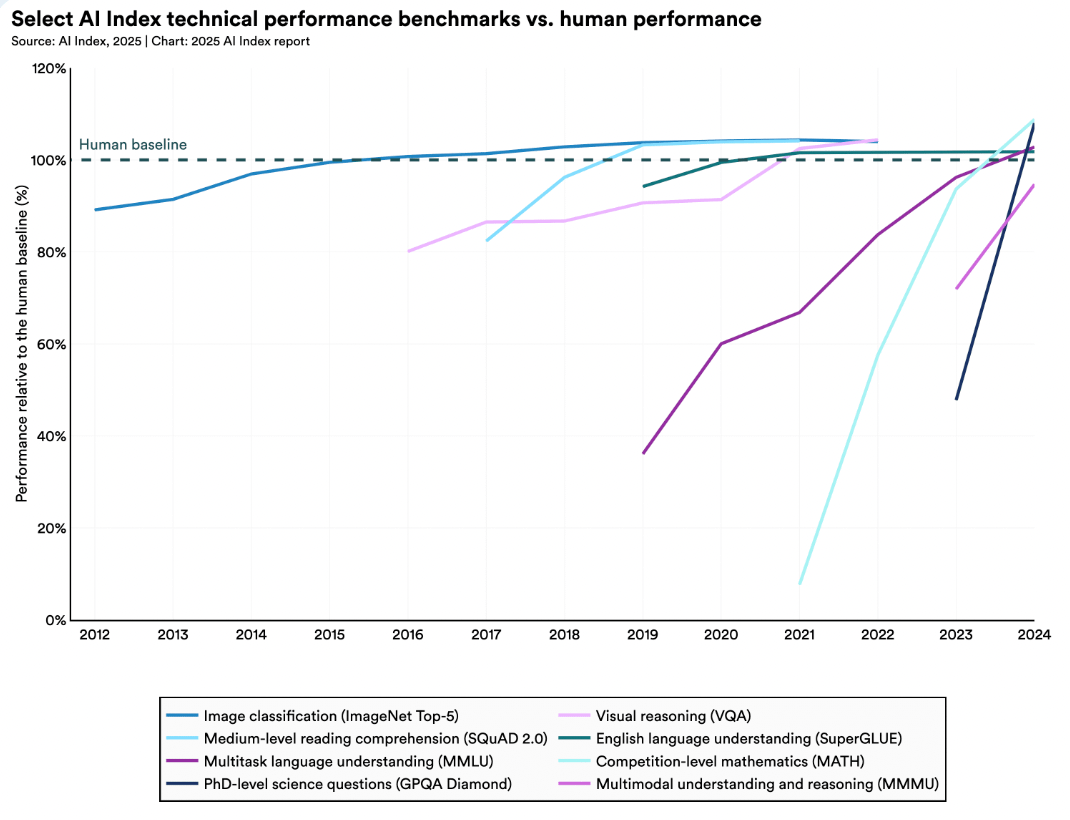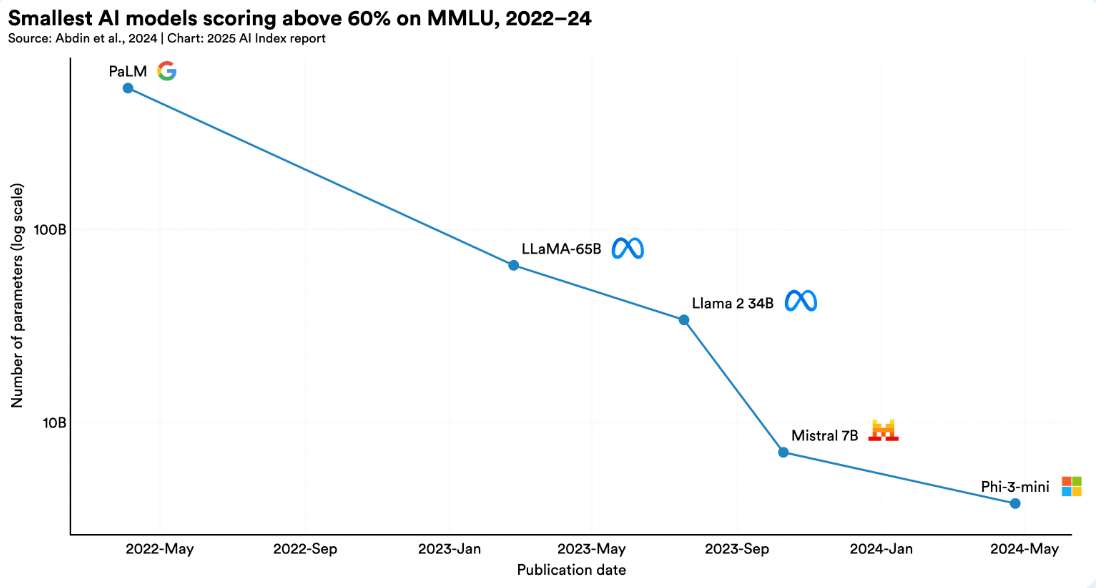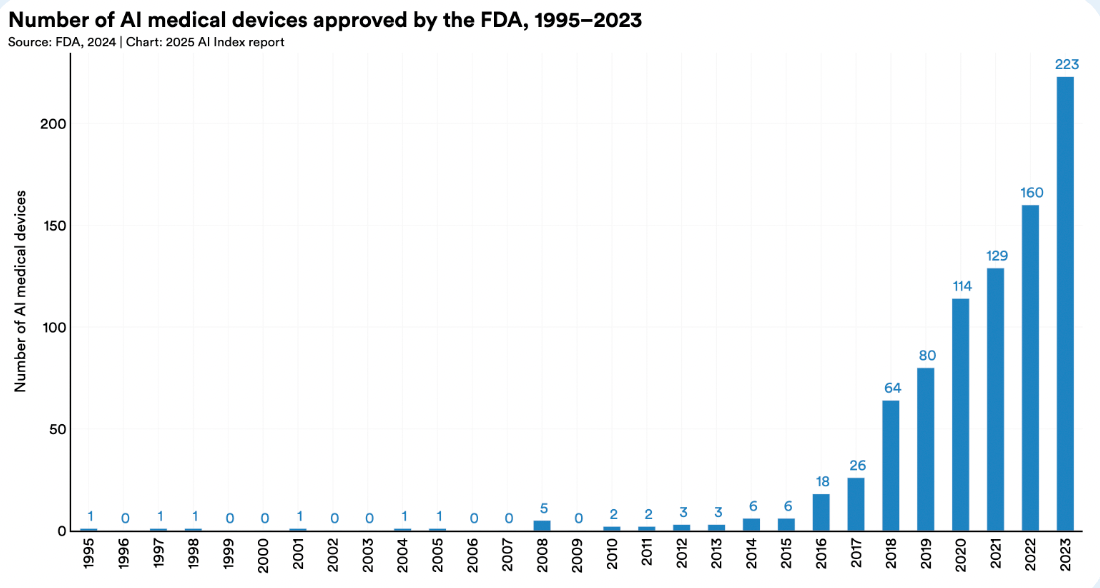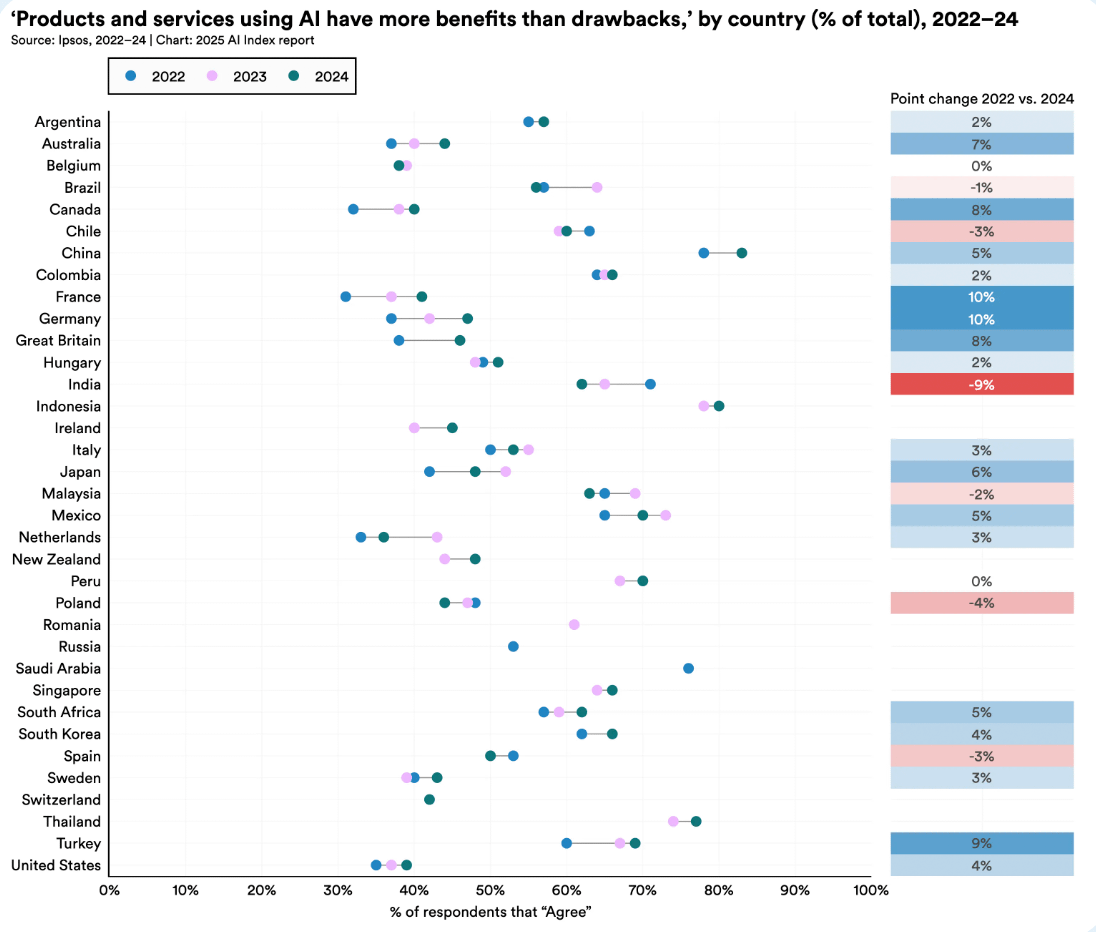Author: Stanford HAI (Stanford Artificial Intelligence Institute)
Compiled by: Felix, PANews
Stanford HAI recently released the 2025 Artificial Intelligence Index Report, which spans 456 pages. Here are some key points regarding AI trends:
1. AI is becoming much more powerful than imagined
In the new benchmark tests MMMU, GPQA, and SWE-bench, AI performance has significantly improved: scores increased by 18.8%, 48.9%, and 67.3%, respectively. Beyond benchmark tests, AI systems have made significant progress in generating high-quality videos, and in some cases, large language models (LLMs) have even surpassed humans in time-limited programming tasks.
Note:
MMMU is a carefully designed new benchmark specifically for university-level multidisciplinary multimodal understanding and reasoning, aimed at assessing foundational models' expert-level multimodal understanding capabilities across a wide range of tasks.
GPQA is a challenging dataset containing 448 high-quality and extremely difficult multiple-choice questions written by experts from various fields. Experts with or pursuing a PhD in the relevant field have an accuracy rate of only 65%, while highly skilled non-expert validators, despite spending an average of over 30 minutes and having unrestricted access to the internet, have an accuracy rate of only 34%.
SWE-bench is a benchmark used to evaluate the performance of large language models (LLMs) on real-world software problems collected from GitHub.

2. AI is becoming more efficient, accessible, and affordable
The capabilities of smaller AI models with fewer parameters are increasingly enhanced: in just two years, the number of parameters has decreased by about 100 times, yet their scores on the large-scale multi-task language understanding (MMLU) test still exceed 60%.
The gap between open-source and closed-source models is also narrowing, with performance differences in some benchmark tests reduced from 8% to just 1.7%.

Additionally, from November 2022 to October 2024, the reasoning costs for systems reaching GPT-3.5 levels have decreased by over 280 times. On the hardware level, costs are decreasing by 30% annually, while energy efficiency is improving by 40% each year.
The threshold for advanced AI is rapidly lowering. Not to mention the development of sparse models like DeepSeek, where only relevant parameters are activated under a mixture of experts (MoE) structure to respond to user queries, making the whole process more efficient.
Indeed, as smaller yet more capable AI models continue to emerge, the requirements for AI model training are decreasing, and cost-effective distributed training is expected to become mainstream in the next decade. Currently, several top projects are conducting related research based on different theoretical frameworks.
3. AI is increasingly integrated into daily life
In 2023, the U.S. Food and Drug Administration (FDA) approved 223 AI-assisted medical devices, compared to just 6 in 2015. On the roads, self-driving cars are no longer experimental: one of the largest operators in the U.S., Waymo, provides over 150,000 self-driving services weekly, while Baidu's Apollo Go autonomous taxi fleet is now operational in multiple cities across China.

4. Corporate investment in AI has surged, driving record investments and applications
The application of AI in business is also accelerating: in 2024, 78% of organizations are using AI, up from 55% the previous year. Meanwhile, an increasing number of studies confirm that AI can enhance productivity and help bridge the skills gap across the entire workforce.
In fact, as AI leads to exponential growth in customer expectations, existing solutions can become outdated overnight, making it more frequent for existing businesses to lose adaptation opportunities and experience product-market fit collapses.
5. Despite rising global optimism about AI, Asians are more optimistic about it
In countries like China (83%), Indonesia (80%), and Thailand (77%), the majority believe that the benefits of AI products and services outweigh the drawbacks. In contrast, in places like Canada (40%), the U.S. (39%), and the Netherlands (36%), optimism remains far below this level.
However, this attitude is changing: since 2022, optimism has significantly increased in some previously skeptical countries, including Germany (up 10%), France (up 10%), Canada (up 8%), the UK (up 8%), and the U.S. (up 4%).

6. The influence of AI in scientific research is growing, becoming a key driver of scientific advancement
The increasing importance of AI is reflected in major scientific awards: two Nobel Prizes were awarded for contributions to deep learning (Physics) and its application to protein folding (Chemistry), while the Turing Award recognized pioneering contributions in reinforcement learning.
Clearly, AI is developing at an exponential and unexpected pace, which is significant for most people. Therefore, AI safety is becoming increasingly important. While AI makes forgery easier, cryptography makes forgery more difficult. There is hope for crypto projects that can leverage the native properties of blockchain (verifiability and transparency) to build practical solutions in this field.
Related reading: Interview with a16z founder Chris Dixon: The intersection of AI and cryptocurrency
免责声明:本文章仅代表作者个人观点,不代表本平台的立场和观点。本文章仅供信息分享,不构成对任何人的任何投资建议。用户与作者之间的任何争议,与本平台无关。如网页中刊载的文章或图片涉及侵权,请提供相关的权利证明和身份证明发送邮件到support@aicoin.com,本平台相关工作人员将会进行核查。




